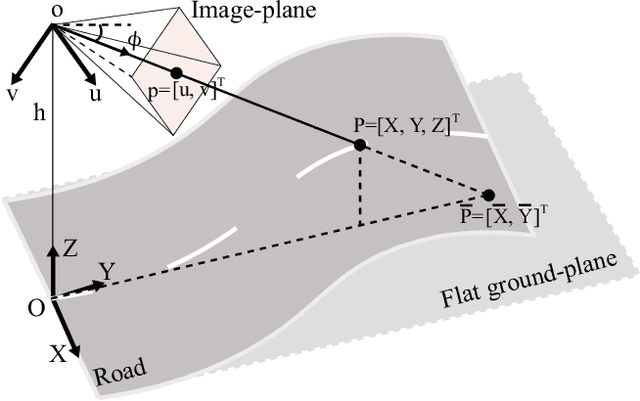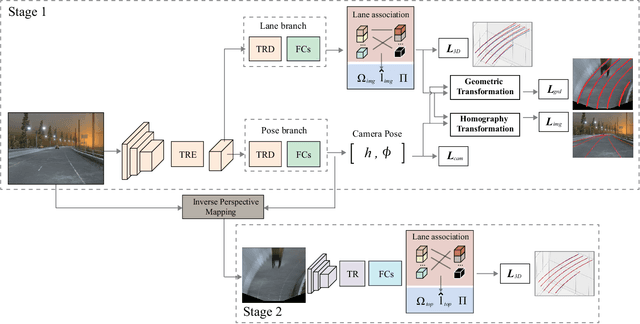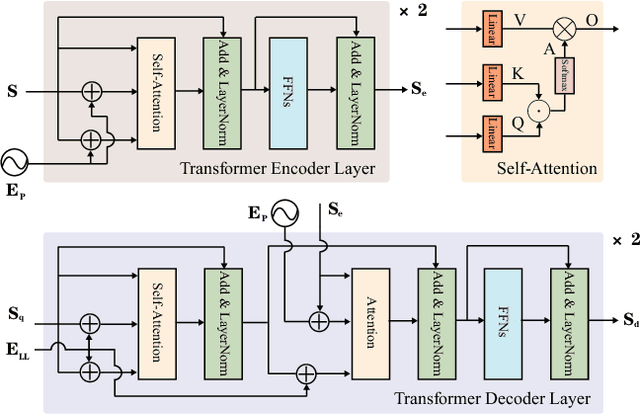Zhiliang Xiong
Learning to Predict 3D Lane Shape and Camera Pose from a Single Image via Geometry Constraints
Dec 31, 2021



Abstract:Detecting 3D lanes from the camera is a rising problem for autonomous vehicles. In this task, the correct camera pose is the key to generating accurate lanes, which can transform an image from perspective-view to the top-view. With this transformation, we can get rid of the perspective effects so that 3D lanes would look similar and can accurately be fitted by low-order polynomials. However, mainstream 3D lane detectors rely on perfect camera poses provided by other sensors, which is expensive and encounters multi-sensor calibration issues. To overcome this problem, we propose to predict 3D lanes by estimating camera pose from a single image with a two-stage framework. The first stage aims at the camera pose task from perspective-view images. To improve pose estimation, we introduce an auxiliary 3D lane task and geometry constraints to benefit from multi-task learning, which enhances consistencies between 3D and 2D, as well as compatibility in the above two tasks. The second stage targets the 3D lane task. It uses previously estimated pose to generate top-view images containing distance-invariant lane appearances for predicting accurate 3D lanes. Experiments demonstrate that, without ground truth camera pose, our method outperforms the state-of-the-art perfect-camera-pose-based methods and has the fewest parameters and computations. Codes are available at https://github.com/liuruijin17/CLGo.
End-to-end Lane Shape Prediction with Transformers
Nov 09, 2020



Abstract:Lane detection, the process of identifying lane markings as approximated curves, is widely used for lane departure warning and adaptive cruise control in autonomous vehicles. The popular pipeline that solves it in two steps---feature extraction plus post-processing, while useful, is too inefficient and flawed in learning the global context and lanes' long and thin structures. To tackle these issues, we propose an end-to-end method that directly outputs parameters of a lane shape model, using a network built with a transformer to learn richer structures and context. The lane shape model is formulated based on road structures and camera pose, providing physical interpretation for parameters of network output. The transformer models non-local interactions with a self-attention mechanism to capture slender structures and global context. The proposed method is validated on the TuSimple benchmark and shows state-of-the-art accuracy with the most lightweight model size and fastest speed. Additionally, our method shows excellent adaptability to a challenging self-collected lane detection dataset, showing its powerful deployment potential in real applications. Codes are available at https://github.com/liuruijin17/LSTR.
 Add to Chrome
Add to Chrome Add to Firefox
Add to Firefox Add to Edge
Add to Edge